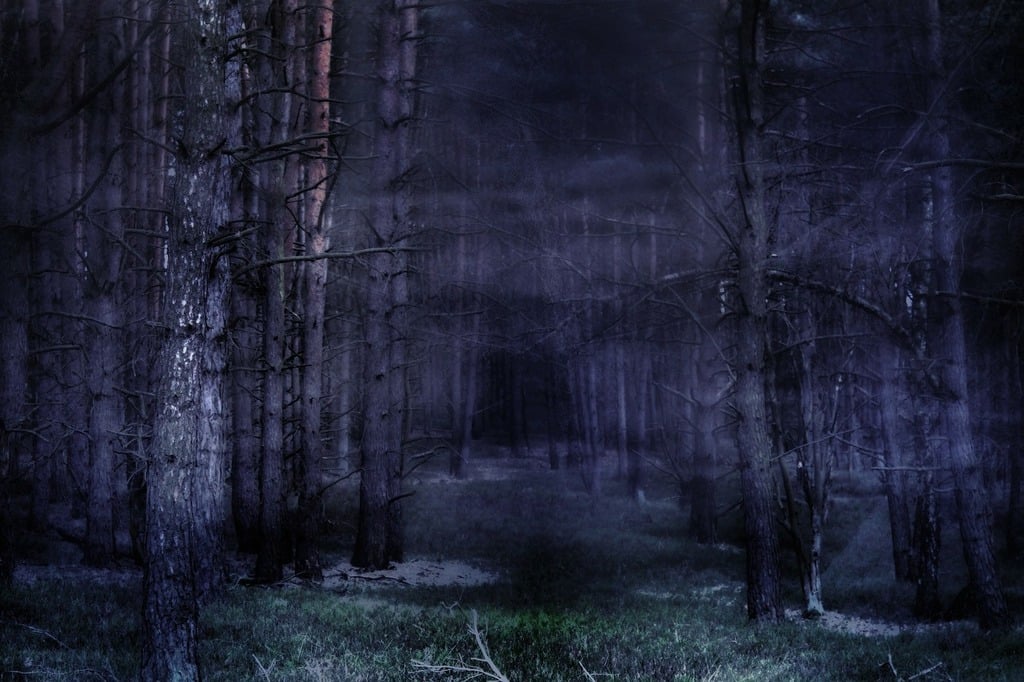
The atmosphere of some horror movies can be more terrifying than a murderer, monster, or ghost. It can be an overly quiet room or the eeriness of a spooky, dark hallway. Even when it appears that there is nothing genuinely wrong, there is a disconcerting sense that something is wrong or might be wrong. Here, I’m referring to atmospheric horror, a subgenre of horror that emphasizes nuance over spectacle. To evoke a greater sense of unease, atmospheric horror makes use of mood, space, and tension based on the senses.
I mean it when I say that atmosphere can be a villain. The dread originates from the surroundings themselves: the deafening quiet, the deteriorating walls, the perpetual fog. The setting turns into an enemy that shapes the fear, isolates the characters, and suffocates the audience with anxiety.
In this post, we’ll explore 20 horror films where atmosphere doesn’t just support the horror; it is the horror. These are the slow burns, the mood pieces, the beautifully bleak nightmares that haunt you not because of what they show, but because of what they make you feel.
What Makes Atmosphere a Villain
The antagonist in traditional horror is typically identifiable, such as a masked murderer, a vengeful ghost, or a creature that lurks in the shadows. But in atmospheric horror, the villain is harder to name because it’s everywhere. It is a presence rather than a character. A feeling. Every frame is tinged with a slow, nagging sense of wrongness.
Atmosphere generates fear by manipulating what the viewer senses, not just what they see. Lighting creates unnatural shadows where danger might be hiding. Sound design uses silence, static, or distant thuds to trigger unease. Pacing slows to a crawl, making you sit with your dread. Camera angles isolate characters, making rooms feel too big, too quiet, or too alive.
These tools work together to create a world that feels off, and when that world is hostile enough, you don’t need a monster. Atmosphere can overpower traditional villains entirely. A haunted house isn’t just where the ghost lives; it is the epicenter of the haunting. A forest isn’t just the setting for a ritual; it’s the thing swallowing the characters whole. The environment becomes the threat, turning space, silence, and stillness into weapons of terror.
In these films, fear comes not from what happens, but from what might happen. And sometimes, that’s even worse.
20 Horror Movies Where Atmosphere Is a Villain

Atmospheric horror doesn’t just grab you, it surrounds you. These films don’t rely on monsters or killers to terrify. Instead, they use tone, space, silence, and dread to become villains in their own right. Below are 20 essential examples where atmosphere is the horror.
The Early Architects of Dread
Expressionist shadows, dream logic, and creeping silence define these classics that laid the groundwork for mood-based horror.
The Cabinet of Dr. Caligari (1920)

Twisted sets and painted shadows distort reality, turning every frame into a waking nightmare. Madness seems to seep from the walls.
Vampyr (1932)
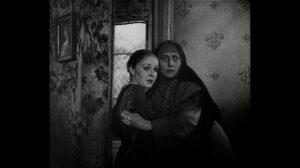
Fog, silence, and surreal camera work create a world that feels like a bad dream.
Kwaidan (1964)
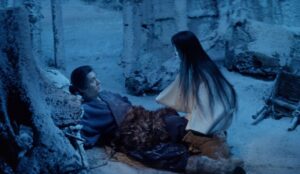
Stylized, theatrical visuals and an eerie stillness turn traditional Japanese ghost stories into an exquisite, unsettling panorama.
The Haunting (1963)
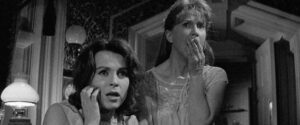
You never see the ghost, but the house groans, breathes, and feels like it’s watching you. Fear comes from suggestion, not spectacle.
Repulsion (1965)
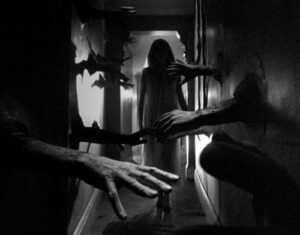
A woman’s apartment becomes a psychological prison as space itself warps under the weight of her unraveling mind.
Surreal and Oppressive Worlds
These films use sound, setting, and abstract horror to bury viewers in dread that feels inescapable.
Eraserhead (1977)

Industrial noise and bizarre imagery create a claustrophobic dreamscape of parental anxiety and body horror.
Possession (1981)
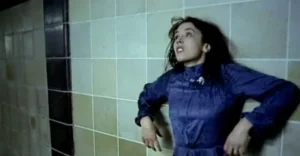
Emotional breakdowns spill into physical space. Subway tunnels, stark apartments, and screaming silence do the haunting.
The Shining (1980)
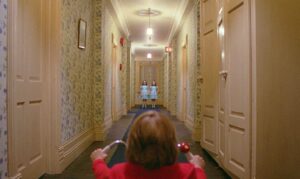
The Overlook Hotel isn’t just haunted, it haunts. Its impossible layout and lingering stillness become an omnipresent threat.
The Lighthouse (2019)
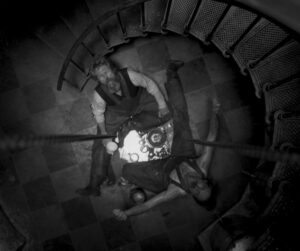
Isolation, the storm, and mythic madness churn as the sea and the light itself drive two men toward a salty oblivion.
The Wolf House (2018)
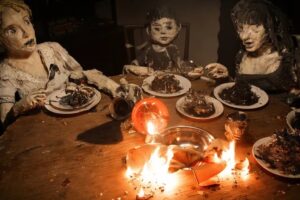
A stop-motion fever dream where the house twists and morphs as a visual embodiment of trauma and control.
Modern Minimalism and Existential Terror
Recent horror that weaponizes silence, slow pacing, and emotional decay, letting atmosphere suffocate both characters and the audience.
The Witch (2015)
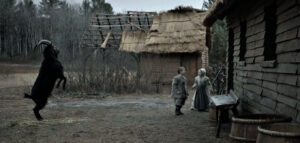
Bleak landscapes and natural lighting create a cold, godless world where isolation is as terrifying as the devil.
Under the Skin (2013)
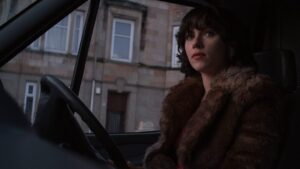
Sparse dialogue and alien detachment make Earth itself feel uncanny. The atmosphere becomes an existential trap.
The Blackcoat’s Daughter (2015)

A cold, slow descent into spiritual emptiness, where the true evil feels more like an unseen presence than a person.
It Comes at Night (2017)
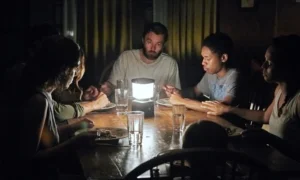
Darkness and distrust swallow the screen. The tension never explodes; it festers.
Skinamarink (2022)
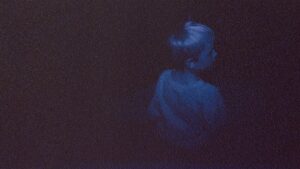
A child’s nightmare made real. Disconnected architecture, whispering static, and time distortion become the only monsters.
I Am the Pretty Thing That Lives in the House (2016)
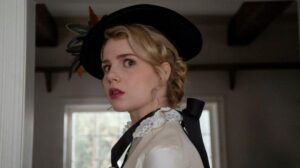
Hauntingly slow and quiet, the house itself becomes a sentient tomb of memory and decay.
Pulse (2001)
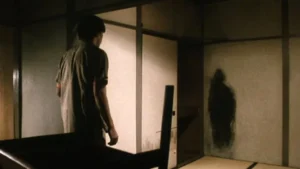
The loneliness of the internet era manifests as silence, static, and ghostly isolation that spreads like a virus.
The Blair Witch Project (1999)
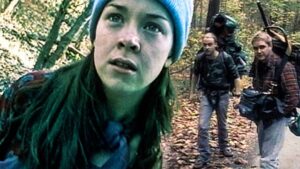
Found-footage realism, soundscape dread, and an invisible force in the woods create terror through pure anticipation.
Antichrist (2009)

Nature isn’t healing, it’s hostile. Every rustling leaf and creaking tree pulse with grief and cosmic cruelty.
The Empty Man (2020)

Reality slowly frays as atmosphere builds from urban unease to cosmic horror. The villain isn’t what you see; it’s what surrounds you.
How Atmosphere Changes the Horror Experience
Atmospheric horror creeps in through the cracks rather than attacking you with teeth and claws. These movies arouse fear more psychologically than through violent shocks or unexpected scares. The focus of the experience shifts from what occurs to how it feels.
Atmospheric horror emotionally substitutes uneasiness for excitement. It evokes feelings of helplessness, paranoia, and even existential dread. You’re scared with the characters, not just of something. Even though the threat isn’t always apparent, it always exists and lingers like a persistent fog. The end effect is frequently a feeling of gradual suffocation, of being engulfed by something big and uncaring.
The role of the viewer is altered by this type of horror. You’re involved in the events, not just watching them happen. The tension is stretched out like a tightrope, the pacing is slower, and the sounds are quieter. These movies reward viewers who are prepared to sit through discomfort rather than be startled out of it by requiring patience and focus.
And perhaps most distinctively, atmospheric horror doesn’t end when the credits roll. The images, tone, and feelings the film inspires in you stay with you. You carry them in the pit of your stomach and the back of your mind. It’s the kind of fear that doesn’t scream, it echoes.
Common Themes in Atmosphere-Driven Horror Movies
Atmospheric horror, unlike horror that is reliant on jump-scares, speaks in a whispering tone. It lives in moods, moments, and metaphors rather than always following the tropes of typical horror stories. The emotional and visual language of any film that has atmosphere as the antagonist is shaped by the deliberate manipulation of environmental elements, sound design, and character perception to evoke a pervasive sense of dread, unease, or oppression.
Isolation — Physical and Psychological
Atmospheric horror movies often trap their characters in a space that might be a remote forest, a crumbling hotel, or an empty apartment, and help isn’t coming. But isolation is not only a physical space; it is rooted in emotion. Characters are also separated from other people. When bonds dissolve, identities fade away, and silence grows, anxiety intensifies.
Decay and Desaturation
Peeling wallpaper. Rotting wood. Bleached skies. These films are soaked in visual rot. Color drains from the frame, giving way to greys, shadows, and sickly hues. The environment makes it feel like they’ve been abandoned by life. The decay becomes a metaphor for emotional and spiritual collapse.
Loss of Time, Logic, or Identity
In atmospheric horror movies, time doesn’t just pass; it unravels. Days blur together. Nights last forever. Logic breaks down, and characters begin to question reality and their perception of it. The result is a slow disintegration of self where fear comes not from what’s outside the mind, but from within it.
Subversion of Space
The trusted spaces in our lives: homes, hospitals, schools, and even our bedrooms, are hijacked by something or someone unknown. The known has become hostile; the familiar has become unwelcoming, even predatory. A hallway that stretches endlessly. Space becomes a weapon, no longer aligned with comfort or the laws of physics.
Minimalism Over Monsters
In many of these films, the most frightening material is what you do not see. Atmosphere-centered horror movies utilize suggestion rather than spectacle, focusing on shadow, silence, and ambiguity. There is hardly ever a defined monster (other than a presence). The implication becomes that something is always watching and waiting.
Why These Films Matter
While atmosphere-based horror may not always be the most successful genre at the box office, its influence on the genre is undeniable. These movies exhibit some of the most adventurous, interesting, and long-lasting work in horror, not least for the very simple reason that they don’t play by the rules.
Atmospheric horror extends what horror movies can look and feel like. These movies funnel experimentation in lighting, sound design, pacing, and narrative into forms that reflect a blurring between genre film and art-house. The Cabinet of Dr. Caligari’s expressionist sets, Skinamarink’s minimalist dread, and Kwaidan’s painterly terror show that terror can be just as much about how you tell a story as the story itself.
Influence on Indie Horror and the Slow Horror Movement
Atmosphere-first horror has also become an essential part of indie cinema without the use of complex budgets or expensive production. The Witch, The Blackcoat’s Daughter, and Absentia, to name a few, illustrate that dread can often be achieved with a singular focus on atmosphere. Atmosphere-first horror tends to favor psychological tension, ambiguity of threat, and the formation of unease. Independent filmmakers are allowed to tell their own deeply personal horror stories in a manner that is not weighed down by tradition or formulas.
Reshaping What It Means to Be Scared
Perhaps most importantly, these films question our preconceived notions of what fear looks like. Within a world inhabited by jump scares and gore, the atmosphere-driven horror movie reminds us that some of the deepest scares are quiet, patient, and unshakably intimate. Not only do these stories give you a flinch, but there is a feeling of being haunted, as if long after leaving the theater, the dread is still in your bones. By embracing mood over mayhem, these films expand the boundaries of horror, not just as entertainment, but as a cinematic art form.
Conclusion: Dread in the Air
Horror movies often consist of masked killers, monsters from our nightmares, or even Ghosts from our terrible pasts; however, these films remind us how sometimes the scariest villain may not be a villain at all, but rather an experience. A feeling of a present emptiness or hollowness. Atmosphere may be colder than a knife, heavier than a haunted house, and more sustained than monsters hiding in your closet. The atmosphere creeps you out and surrounds you.
So, in a genre known for intensity and shock, the atmosphere-driven stories are different: they linger. They echo. They teach you that the scariest thing in the room may be the room itself.
Have you seen any horror movies that left you with a feeling of discomfort that lasted days? I’d love to hear which mood-based horror films got into your psyche. Please leave your favorites in the comments so we can form a list of dread.
Now check out these nightmares: